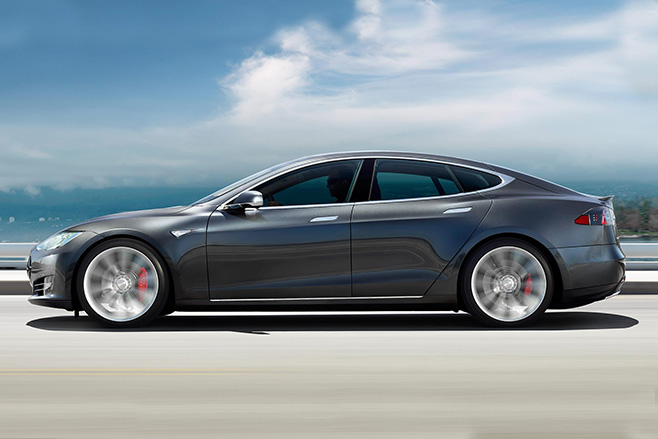Reviews

Gallery 1
TELL ME ABOUT THIS CAR
Electric car maker Tesla continues to capture the public’s imagination despite an extremely limited product line-up. The Tesla Model X SUV arrives locally towards the end of the year, so for now it is still just the Model S sedan – available in a range of variants. Here, we test the most potent version, the $202,875 P90D.

1
STRENGTHS
- Jaw-dropping – and almost neck-bending – standing-start acceleration from P90D’s “Ludicrous Speed” mode, which lives up to its name. Tesla quotes a supercar-rivalling 0-100km/h time of 3.0 seconds using the mode (though it’s a $15,000 option).
- Seamless, hushed and instantaneous all-wheel-drive performance thanks to dual electric motors – one for the front wheels and an even higher-powered one at the rear wheels.
- The Model S offers the longest range of any all-electric vehicle currently available, with 509km quoted for the P90D.
- Tesla says the Model S will cost between $8 and $15 to fully charge via a regular household power supply, which makes it theoretically cheaper to run than rivals running on petrol or diesel.
- Vertical 17-inch touchscreen simplifies infotainment, nav and vehicle settings into one vast display.
- Progressive updates/upgrades for the car are possible via sim-card-based in-car wifi.
- The conventional rear boot is not only large and features an extra hidden storage compartment under the floor, there’s an additional, albeit much smaller, ‘boot’ up front where a combustion engine would normally reside. Tesla quotes a maximum cargo capacity of 894 litres with the rear seats folded.

1
WEAKNESSES
- Faster charging options for the home (and the car) can cost up to several thousand dollars, offsetting any savings made on fuel.
- Still plenty of expensive options even on the flagship P90D.
- Tesla’s Supercharger network – designed to allow long-distance travel – is still in an embryonic phase in Australia. Sydney to Melbourne (and vice versa) is reasonably well covered but the network is otherwise limited.
- The ride quality of the P90D’s air suspension isn’t as smooth as the vehicle’s steering or acceleration, feeling consistently lumpy on typical Australian urban roads.
- Autopilot system not always perfect at keeping the vehicle centred in lane – car can wonder close to extremes of lane markings before steering automatically corrects.
- Battery pack positioning creates high cabin floor that compromises front seat slightly (higher than ideal) and rear seat badly (average adult forced to travel with knees splayed).
- The Model S is composed on winding roads, though not as involving to drive as a BMW 5 Series or Jaguar XF.
There are no direct rivals powered by electric motors alone for the Model S. Otherwise, aside from other similarly sized executive cars such as the BMW 5 Series and Mercedes-Benz E-Class, while the more expensive Maserati Quattroporte and Porsche Panamera could also be classed as competitors.




